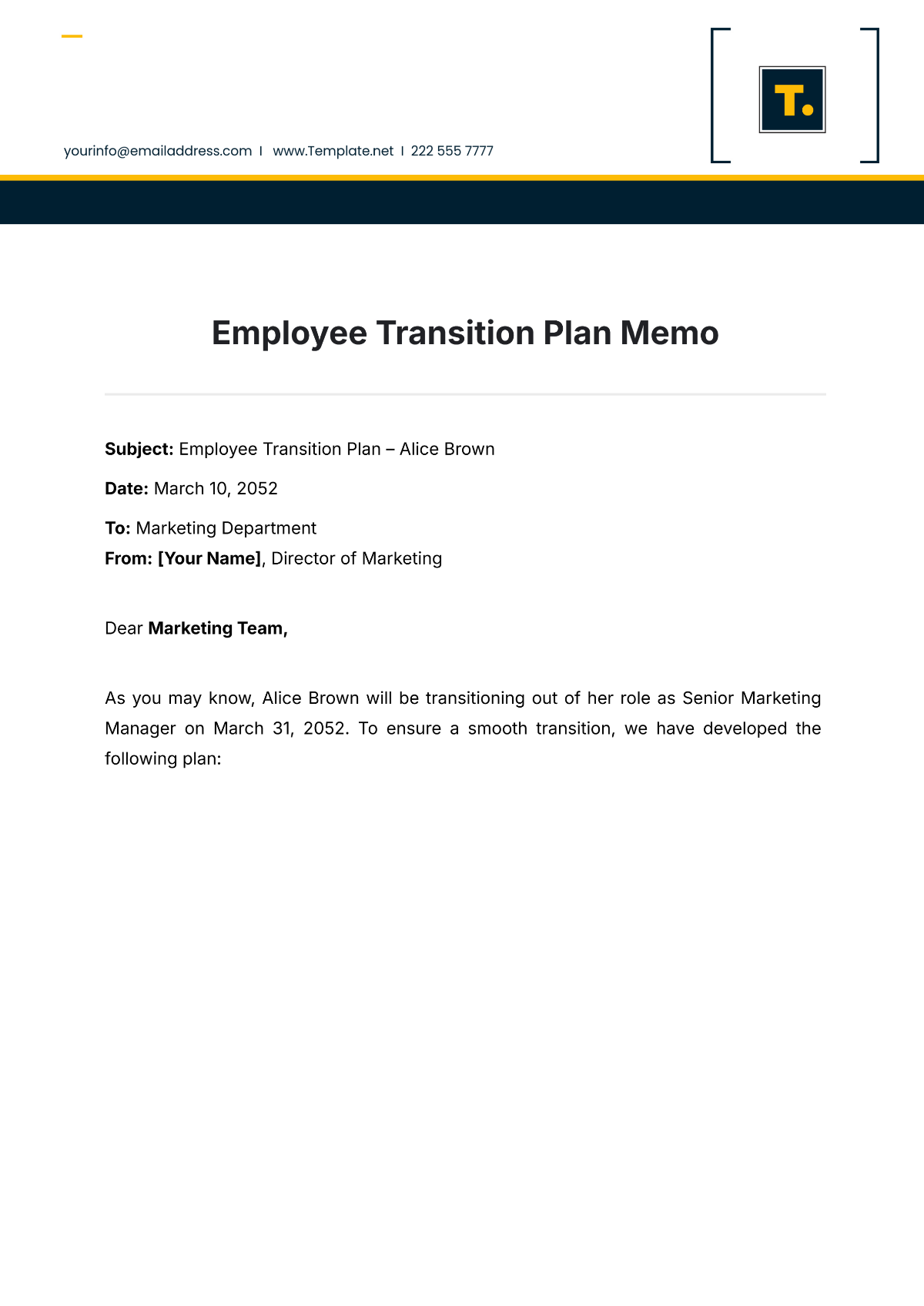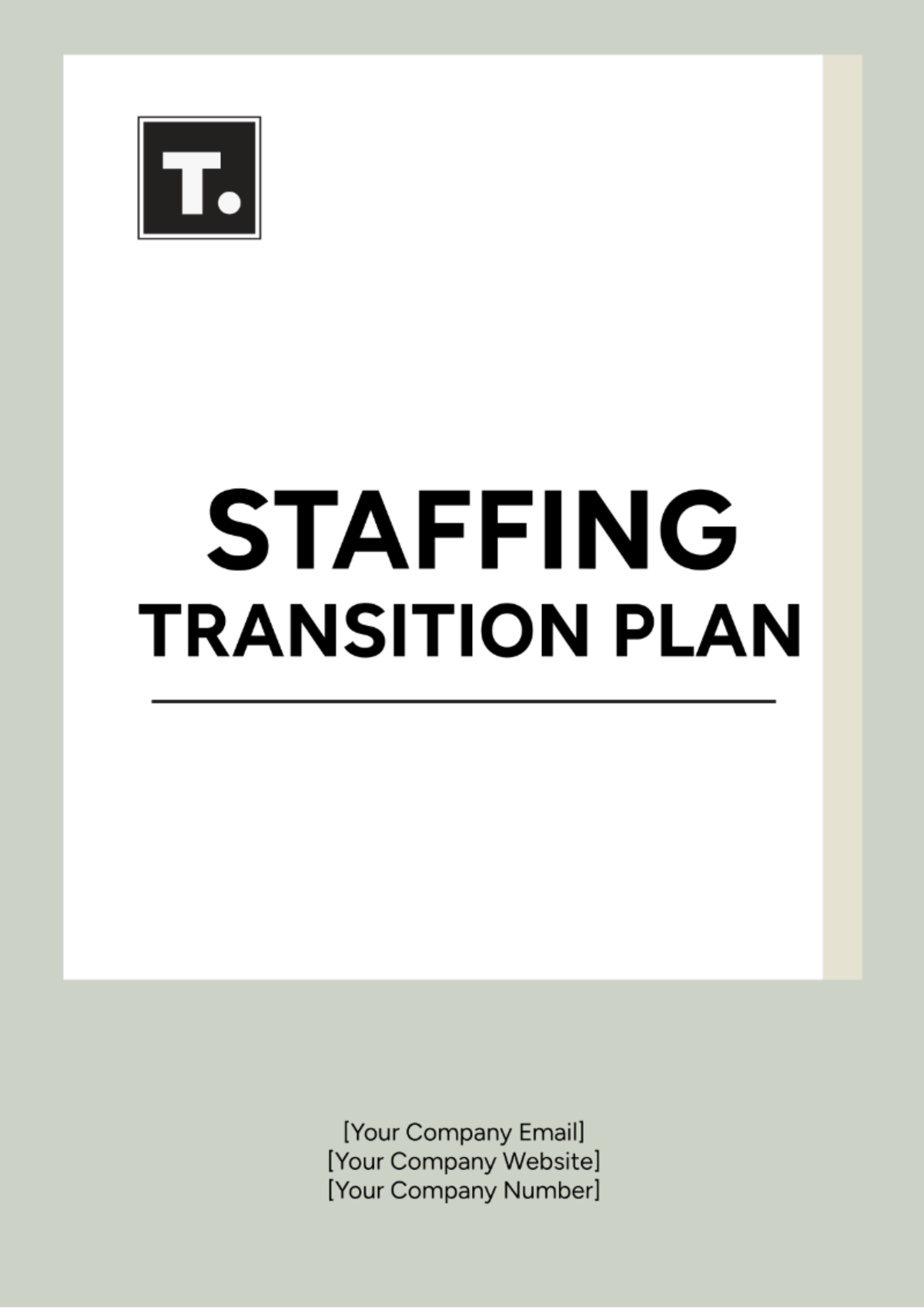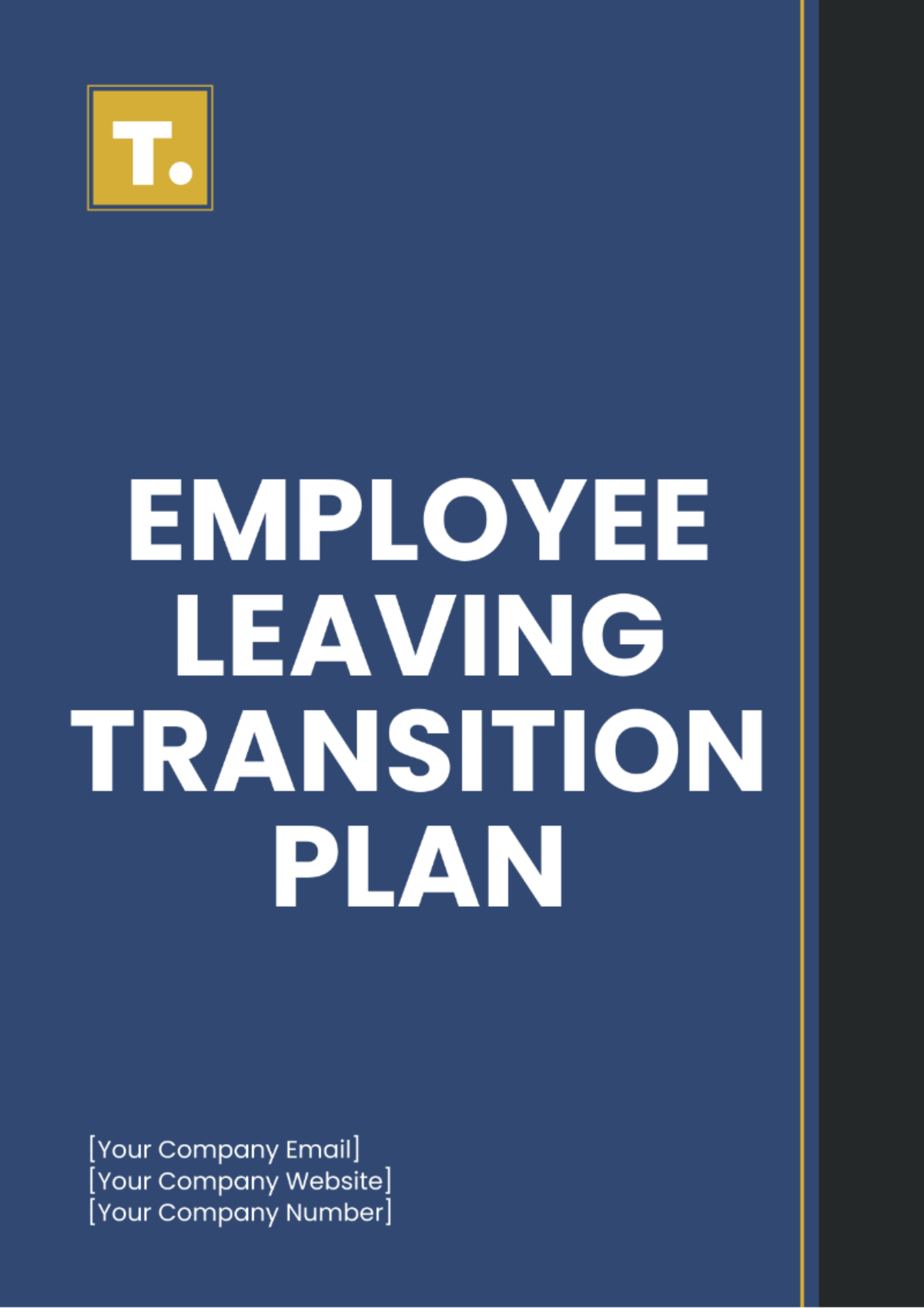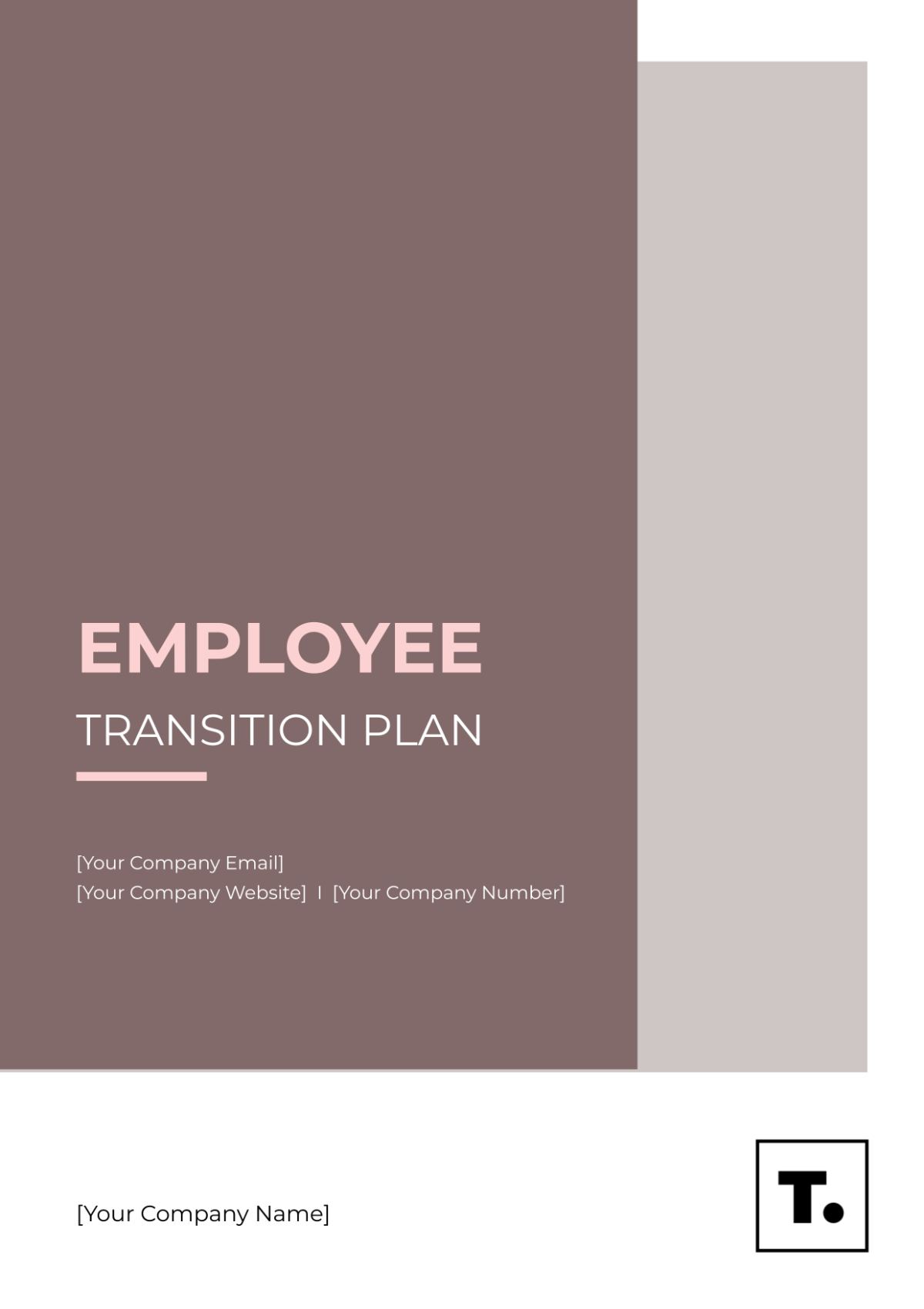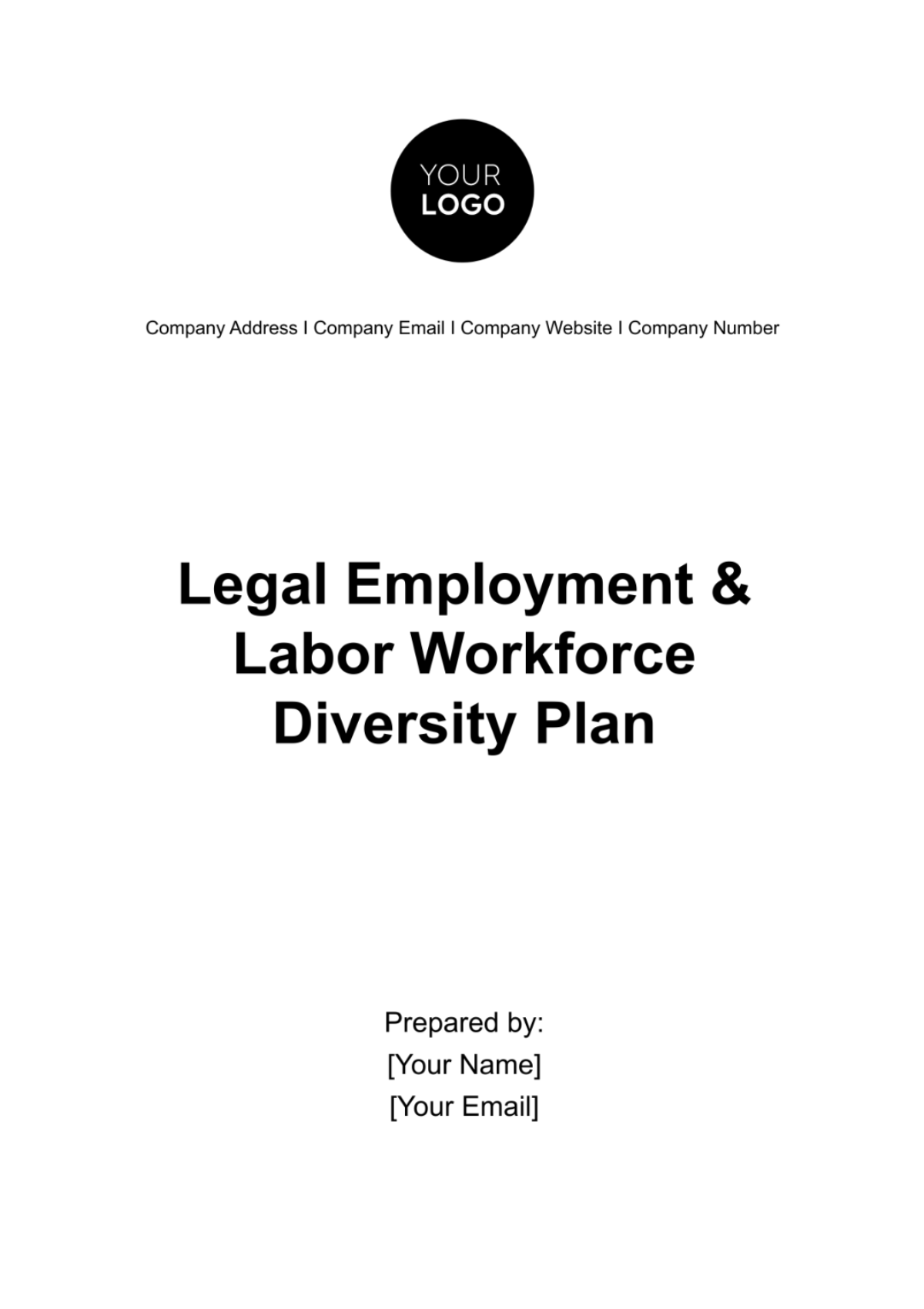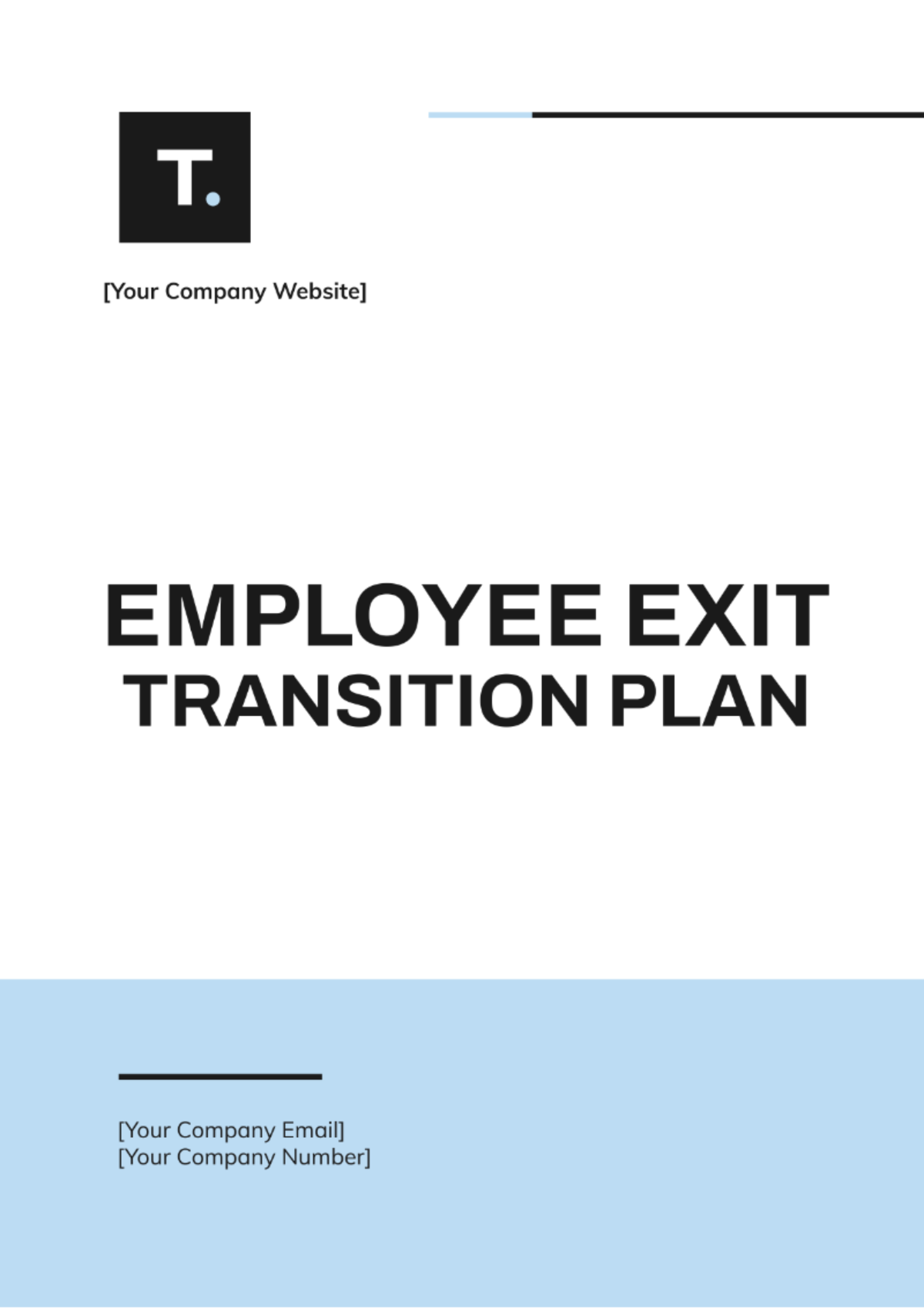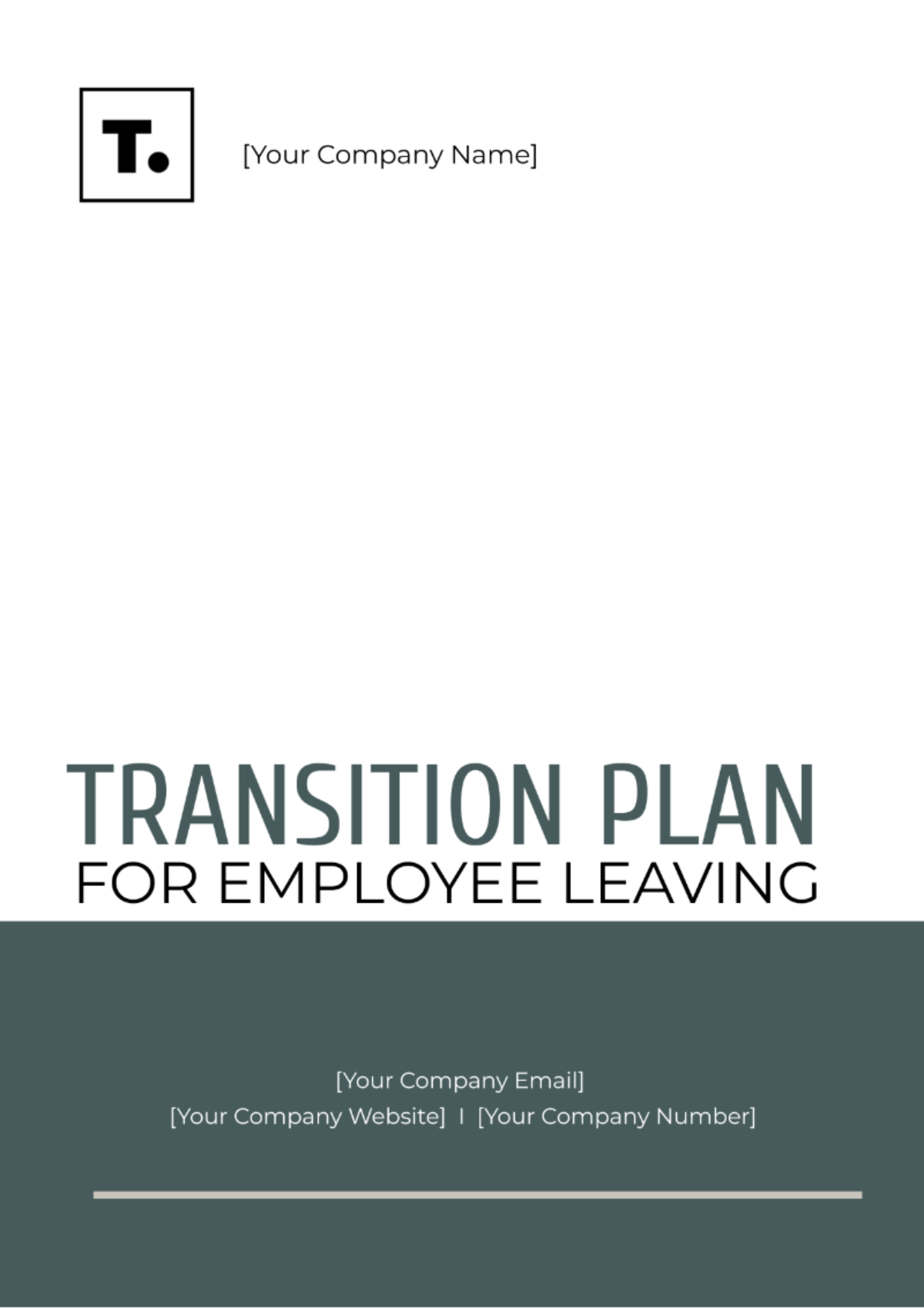New Employee Transition Plan
Prepared By : | Ryzza Joy |
Department : | [YOUR DEPARTMENT] |
Date: | [DATE] |
I. Introduction
Objective
The objective of our New Employee Transition Plan is to streamline the onboarding process and foster the seamless integration of new hires into our organization. By providing clear guidance, resources, and support mechanisms, we aim to accelerate the acclimatization process, cultivate a sense of belonging, and maximize early productivity. Our focus is on ensuring a positive and enriching experience for new employees while promoting long-term retention and success within the organization.
II. Pre-Arrival
A. Onboarding Preparation Checklist
Create an employee account and provide login credentials:
Generate login credentials for the employee to access company systems and tools.
Ensure they have the necessary permissions for their role.
Prepare a workstation (desk, computer, phone):
Set up a designated workspace equipped with necessary hardware and software.
Ensure all tools and equipment are in working order.
Develop a personalized welcome package:
Craft a warm welcome letter from the team or department head, introducing the company culture and values.
Include a comprehensive company brochure detailing its history, mission, and key information.
Provide company swag such as branded merchandise (t-shirts, mugs, etc.) to foster a sense of belonging.
Schedule initial meetings with team members:
Coordinate introductory meetings with key team members, department heads, and stakeholders.
Encourage informal gatherings to facilitate relationship-building.
Assign a mentor/buddy for the new employee:
Match the new employee with an experienced mentor or buddy who can provide guidance and support during the onboarding process.
Ensure the mentor is available to answer questions and offer assistance as needed.
B. Communication
Before arrival, send a welcome email that includes:
Welcome Email:
Send a personalized welcome email to the new employee before their arrival. Include:
General company information: Highlight the company's mission, values, and any pertinent information about its culture.
First-day logistics:
Start time: Specify the start time of their first day and any specific instructions regarding arrival.
Dress code: Guide the dress code, whether it's formal, business casual, or specific to the company's industry.
Parking information: If applicable, provide details about parking arrangements, including any designated parking areas or parking permits.
Introduction to the mentor/buddy and team:
Introduce the assigned mentor or buddy with a brief background and their role in supporting the new employee.
Provide an overview of the team members they will meet on their first day, including names and roles.
A brief overview of the initial week’s schedule:
Outline the schedule for the first week, including any orientation sessions, training workshops, or team meetings they will participate in.
Mention any social activities or team-building events planned during their first week to help them feel welcomed and integrated into the team.
III. First Day
A. Orientation Schedule
Time | Activity | Location | Notes |
|---|---|---|---|
9:00 AM - 9:30 AM | Welcome and Introduction | Conference Room | Welcome by HR |
9:30 AM - 10:00 AM | Office Tour | Office Premises | Introduce key areas |
10:00 AM - 12:00 PM | HR Paperwork and Benefits Orientation | HR Office | Complete necessary documentation |
12:00 PM - 1:00 PM | Lunch with Mentor/Buddy | Company Cafeteria | Informal Introduction |
1:00 PM - 3:00 PM | Introduction to Team | Team Area | Short meetings with team members |
3:00 PM - 5:00 PM | Basic Training Session | Training Room | Introduction to basic tools and resources |
B. Essential Documentation
Ensure the new hire provides and completes:
Identification Documents: Request the new hire to provide valid identification documents as required by company policy and local regulations. This may include a driver's license, passport, or other government-issued ID.
Bank Details for Salary: Collect banking information from the new employee to facilitate salary payments through direct deposit. Ensure the security and confidentiality of this information.
Emergency Contact Form: Ask the new hire to complete an emergency contact form, providing contact details of individuals to be notified in case of an emergency during work hours.
Non-Disclosure Agreement (NDA): Have the new employee review and sign a Non-Disclosure Agreement (NDA) to protect sensitive company information and intellectual property. Ensure they understand the terms and implications of the agreement.
Employee Handbook Acknowledgment: Provide the new hire with a copy of the company's Employee Handbook and require them to review it thoroughly.
IV. First Week
A. Training and Development
The first week should focus on essential training sessions including:
Company policies and procedures: Employees undergo sessions covering essential company policies and procedures. This includes understanding workplace conduct, HR policies, and any regulations pertinent to their role.
Role-specific training: New hires receive training tailored to their specific roles. This encompasses learning job responsibilities, tasks, and expectations to effectively contribute to the team.
Introduction to company software and tools: Training sessions familiarize employees with the software and tools essential for their roles. This ensures proficiency in utilizing technology to perform tasks efficiently.
Safety and compliance training: Employees undergo training on safety protocols and compliance regulations relevant to their work environment. This includes instructions on emergency procedures, health guidelines, and regulatory compliance to ensure a safe and compliant workplace.
B. Scheduled Check-ins
Structured check-ins for feedback and questions:
Check-in Date | Participant | Purpose |
|---|---|---|
Day 1 | Mentor/Buddy | End-of-day feedback and Q&A session. |
Day 3 | Supervisor | Mid-week progress review and address queries. |
Day 5 | HR Representative | End-of-Week review, feedback, and support. |
V. First Month
A. Goals and Objectives
Set SMART (Specific, Measurable, Achievable, Relevant, Time-bound) goals for the first month:
Complete all mandatory training programs:
Specific: Finish all required training modules outlined by HR.
Measurable: Complete 100% of mandatory training modules.
Achievable: Allocate sufficient time each week to complete training sessions.
Relevant: Gain essential knowledge and skills needed for the role.
Time-bound: Finish all training within the first month of employment.
Meet with cross-functional teams to understand company operations:
Specific: Schedule meetings with representatives from various departments.
Measurable: Engage in at least one meeting with each cross-functional team.
Achievable: Coordinate meetings within the first month's schedule.
Relevant: Gain insights into different aspects of company operations and workflows.
Time-bound: Complete meetings with cross-functional teams by the end of the first month.
Begin contributing to projects or tasks:
Specific: Identify and start working on at least one project or task.
Measurable: Show progress or completion of assigned tasks.
Achievable: Allocate time and resources to begin contributing effectively.
Relevant: Contribute to company goals and objectives.
Time-bound: Start actively participating in projects or tasks within the first month.
Regularly check in with supervisor and mentor:
Specific: Schedule regular check-ins with both supervisor and mentor.
Measurable: Attend scheduled check-in meetings as planned.
Achievable: Allocate time for check-ins without disrupting workflow.
Relevant: Receive guidance, feedback, and support from both supervisor and mentor.
Time-bound: Maintain regular communication with supervisor and mentor throughout the first month.
B. Performance Review
At the end of the first month, conduct a performance review to discuss:
Achievements and Progress: Review the new employee's accomplishments and progress made during their first month on the job. Highlight successes and commendable efforts.
Feedback from the team and supervisor: Gather input from colleagues and the supervisor regarding the new employee's performance, contributions, and areas of strength or improvement.
Areas for Improvement: Identify any areas where the employee may need additional support or development. Discuss constructive feedback and opportunities for growth.
Action Plan for the coming months: Collaboratively establish goals and objectives for the upcoming months based on the performance review discussions. Outline clear action steps and support mechanisms to help the employee succeed in their role.
VI. Ongoing Support
Category | Initiative | Description |
|---|---|---|
A.Continuous Learning | Access to online learning portals | Provide employees access to online platforms for self-paced learning and skill development. |
Regular training workshops | Organize periodic training sessions or workshops to enhance skills and knowledge in specific areas. | |
Mentorship programs | Pair employees with experienced mentors to provide guidance, advice, and support for professional growth. | |
Professional development allowances | Allocate funds or resources for employees to attend conferences, courses, or pursue certifications. | |
B. Feedback Mechanisms | Quarterly one-on-one sessions | Schedule regular one-on-one meetings between employees and supervisors to discuss progress, goals, and areas for improvement. |
Anonymous suggestion box | Implement a system for employees to submit feedback, suggestions, or concerns anonymously, promoting open communication. | |
Employee engagement surveys | Conduct periodic surveys to gauge employee satisfaction, gather feedback, and identify areas for improvement within the organization. |
VII. Conclusion
In conclusion, implementing a structured and supportive transition plan is paramount for cultivating a positive onboarding experience. By prioritizing employee satisfaction, retention, and productivity through clear guidance, mentorship, and regular feedback mechanisms, organizations can lay a solid foundation for long-term success. Such initiatives not only facilitate seamless integration into the company culture but also empower employees to thrive in their roles, ultimately benefiting both the individual and the organization as a whole.
